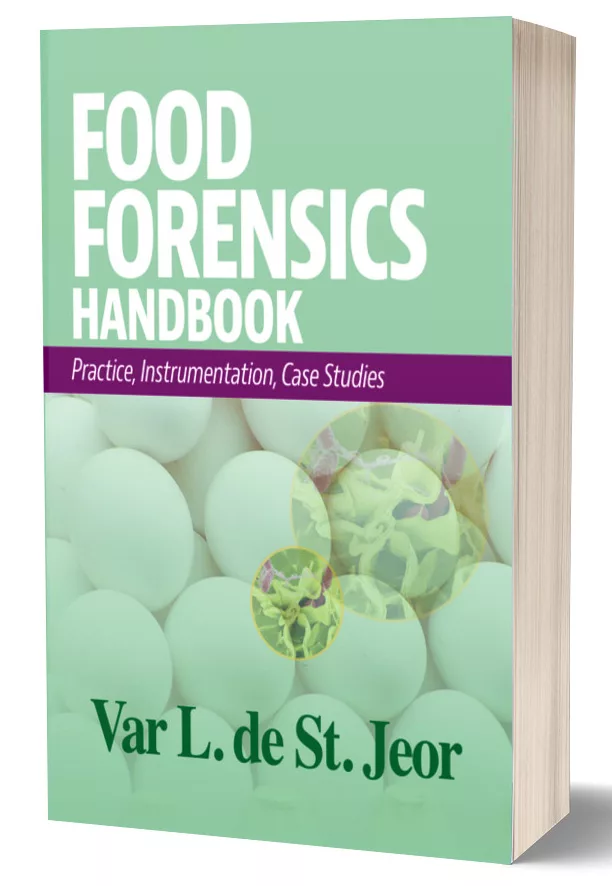PCR Offers Real-Time Realities

What if we could get a genetic profile of livestock before the animals enter the slaughter facility and automatically log this information for each animal, including a screen for foodborne pathogens, in one system? What if we could use that same genetic-based technology in the slaughterhouse to verify whether or not a pathogen reduction intervention step has been effective? What if that same test could provide the grinding operation with the ability to trace pathogen-contaminated product to a specific lot, or even a specific animal? And what if the ready-to-eat (RTE) meat manufacturer could supply its food retailer customers with those assay results as documentation that the product is safe and of the highest quality?
"Such testing and documentation would mean that contaminated product could be pulled before it is passed along to the next buyer along the food production and distribution chain," answers Jay L.E. Ellingson, Ph.D., Director of Food Safety Services at Wisconsin-based Marshfield Clinic, a nationally known multi-specialty private group medical practice that operates food safety, veterinary and human diagnostic laboratories in addition to its clinical facilities. "If you find a contaminated animal on the farm, that animal doesn't even hit the slaughter facility. If product on the slaughter floor is contaminated, it's not even brought into the grinding facility, and so forth. This would have a direct and positive impact on food safety and public health."
Because of the rapid distribution of food products in the U.S., any intervention strategy must include a pathogen detection program in which the goal is to cull contaminated product prior to moving down the food production chain, Ellingson says. But to realize this best-case scenario of a systematic chain of custody that assures the safety and quality of the product from the farm all the way to the consumer, the food industry must have a pathogen detection tool that is highly sensitive and specific and offers a very rapid turnaround time.
"The most promising technology to date uses polymerase chain reaction (PCR), a DNA-amplification based method that provides rapid, real-time quantitative microbial detection," he states, "as well as high specificity and accuracy with increased sensitivity. PCR is gaining acceptance as a quality assurance tool in the food industry not only because it offers these advantages, but because the assay is user-friendly. PCR is becoming a very practical tool that can be used at each step in the food production chain."
Amplifying Innovation: Patents, Partnerships and Progress
Marshfield Clinic Laboratories Food Safety Services, in partnership with Indianapolis, IN-based Roche Diagnostics Corporation, have developed state-of-the-art PCR pathogen diagnostics that will make the accurate, rapid intervention strategies of which Ellingson speaks much more possible. The clinic has filed patents on specific DNA sequences unique for EHEC, Salmonella spp. and Listeria monocytogenes. These sequences, coupled with recent advances in real-time PCR technology offered by the Roche LightCyclerTM instrumentation, allow the clinic's food safety laboratory to attain highly specific results in a 12-hour turnaround time, including confirmation, on raw and ready-to-eat food product.
Ellingson notes that the "flexible" chemistry in the PCR method, coupled with melting curve analysis of the amplified DNA sample, allows the lab to get a confirmation of the target DNA product on the same reaction as the molecular quantification. "One of the newest of these chemistries is fluorescence resonance energy transfer (FRET). With FRET, you can create a Southern blot within the PCR reaction, which makes it a confirmatory test already inherent in the reaction. The FRET chemistry also locks you into the target organism so that the fragment that you amplify is the exact fragment that is coming from the gene unique to that bacteria. With this kind of chemistry, it is feasible that we will not only be able to get PCR results in 12 hours, but that in the near future, results from these assays could be obtained in as little as six hours."
Automated PCR also offers multiplexing capability, which allows the analyst to simultaneously identify multiple organisms in one tube. This is possible when oligonucleotides designed to "fence off" the unique genetic makeup of each individual organism are added to the tube. This is particularly useful for the food industry, adds Ellingson, because rather than running three separate reactions, "you can run one reaction that quarantines all three of the federally regulated pathogens--Listeria monocytogenes, E. coli O157:H7 and Salmonella."
"Many RTE food manufacturers test for Salmonella and Listeria at once, for example, to verify or validate their HACCP plan," he continues. "Instead of running two different assays, multiplexing allows you to run both assays on the same product sample at the same time, depending on some variability in the selective media used. This means that the food manufacturer doesn't have to wait for two different certificates of analysis to arrive before he/she can ship that product lot. In addition, with PCR, the manufacturer doesn't have to wait for confirmation, because with this method, there is no other confirmation work to be done if a sample is positive."
This is why, in terms of testing technology, PCR should be the gold standard in rapid microbial detection, he says. "The method has evolved to the point that it is literally pushing the frontiers of science in terms of accuracy."
Ellingson considers this for a moment. "Now, the next question is, could we, in the near future multiplex six organisms in one reaction?"
www.roche-diagnostics.us
Looking for quick answers on food safety topics?
Try Ask FSM, our new smart AI search tool.
Ask FSM →








